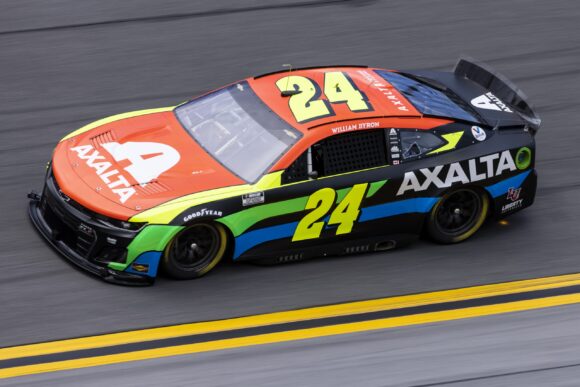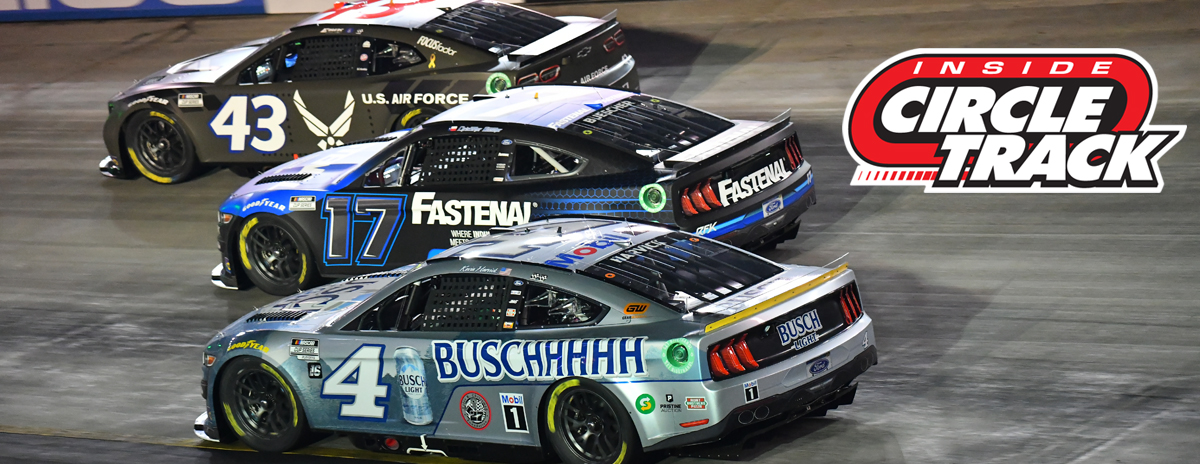
William Byron testing the Next Gen car earlier this year at Daytona(Photo: Getty Images)
NASCAR hasn’t always been an organization that has listened to its competitors and taken what they said into consideration when making key decisions regarding the mechanical and safety aspects of their cars. And in the early development of the Next Gen car, it appeared as if that trend was continuing to be the case as the sanctioning body, teams and drivers have worked through the process of bringing the Next Gen race car to fruition.
That “disconnect” between NASCAR and the competitors, as it was labeled by driver Denny Hamlin back in July, was particularly evident regarding some of the safety aspects of the car. The veteran driver felt as if the drivers and teams were not being kept informed well enough at that time.
The Generation 7 machine will take to the track officially for the first time in the exhibition running of the Busch Light Clash at the Coliseum inside the Los Angeles Coliseum on February 6th. It’s first points-paying race will come in the Daytona 500 on February 20th.
However, the trend of not taking heed of the advice offered by competitors could be changing as the development process continues.
NASCAR Cup Series teams completed a two-day test session last week as cars were on the track on Wednesday and Friday at the Charlotte Motor Speedway for the purpose of seeing how the car would react in various situations. In all, hundreds of combined laps were completed over the course of a total of 16 hours of on-track activity employing a variety of horsepower and aerodynamic packages.
After earlier testing of the Next Gen car, there had been suggestions by teams for ways to make the car better. In particular, drivers such as Kevin Harvick insisted that the car was too slow and needed more horsepower. That was illustrated by the fact that lap times were noticeably slower than those turned by the top NASCAR Xfinity Series machines following previous test sessions on the same tracks.
One indication that NASCAR’s leadership is beginning to take notice of what the teams are saying comes from the fact that the desire for more horsepower has been granted. The often criticized high-downforce package using an engine configuration that created 550 horsepower has been shelved after the recent test in Charlotte and the feedback received.
Instead, a 670 horsepower configuration will be the primary engine package at all tracks with the exception of Daytona, Talladega, and possibly the repaved and restyled Atlanta Motor Speedway. Multiple spoiler heights and locations were also employed during the test.
While it would seem to be a given that a great deal of testing would go into the introduction of a new car, that might not have necessarily been a certainty a few years ago as NASCAR was not always sympathetic or responsive to the needs of its teams. But the multiple test sessions held as the sport prepares to usher in this new vehicle have given drivers an opportunity to get a feel for the car and crew members a chance to learn the adjustments that will work best.
Driver comments following last week’s practice indicate that the Next Gen car is proving to be a challenge. Despite spinning on multiple occasions, Richard Childress Racing driver Tyler Reddick is enjoying the process.
“The cars are on edge, which is a good thing,” Reddick told NASCAR.com on Friday. “There’s more mechanical grip in the car, less aerodynamic grip so, you know, you gotta keep it straight and you gotta keep the tires happy. You can’t get completely sideways or as sideways as we used to in years past with the other cars because the side force just doesn’t hold (the cars) down to the track.”
Hendrick Motorsports pilot William Byron also pointed out that drivers are having to work harder inside the Next Gen.
“I think it’s fun,” Byron said after the test session. “It’s definitely fun for the drivers. A lot more going on, you’re sweating a little bit more or at least I was working harder. You’ve got more brake usage, more throttle usage, more of a difference I feel like I’m making.”
Trackhouse Racing driver Daniel Suarez points to the cooperation between the teams and NASCAR during the development of the car as a positive sign.
“But, listen, I’m excited for the challenge,” Suarez stated. “I’m very, very excited with this new car and I think everyone is enjoying the journey. I think we’re going to end up with a very, very good product. We just have to continue to work together to get there.”
It certainly seems as if NASCAR is in fact paying more attention to what their competitors are saying and all involved appear to be benefitting throughout the process.
Richard Allen is a member of the National Motorsports Press Association
Respond to this piece on Twitter –> @RichardAllenIDR
or on Facebook –> InsideCircleTrack/Facebook
